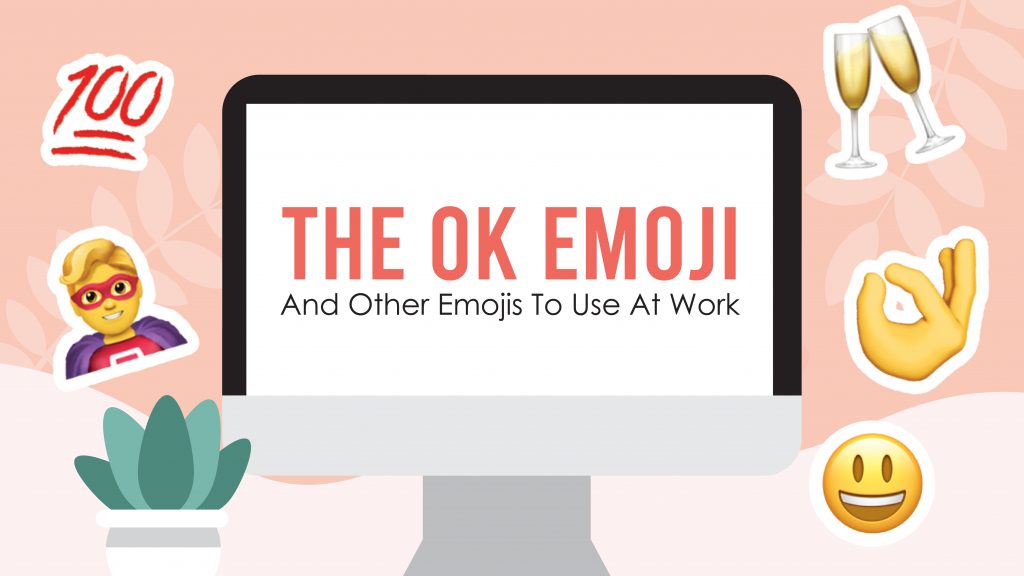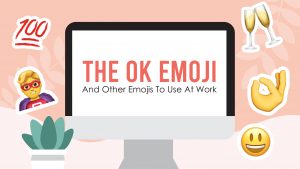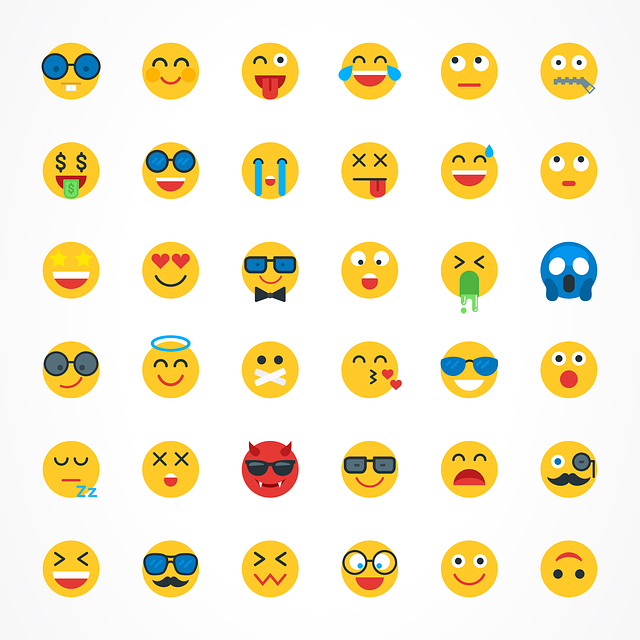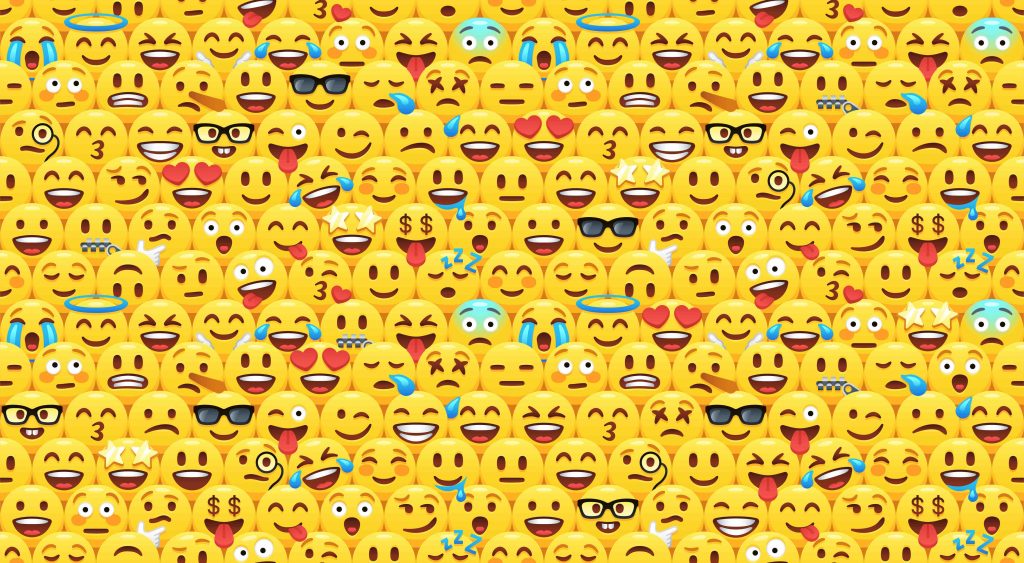The 👌 OK Emoji And Other Emojis To Use At Work 💻


When the first emoji entered the world in 1982, no one had an inkling of how popular they would become. Emojis looked different, were called emoticons, and came in the form of a colon, dash, and right parentheses “:-)”.
The Emoji Boom

Fast forward to 2020. Almost 40 years later, emojis are a global language used over 60 million times a day. With new emojis debuting alongside each software or OS update, emojis are a great way to liven up your chats, texts, or emails. But are all emojis appropriate in any place? How about in any situation? Like at work? Are all emojis acceptable at work? Will an OK emoji in a work email make you look less competent to your boss?
Let’s find out!
First Impressions
If you are introducing yourself to a new boss or potential client, don’t use emojis. No, not even the safe and harmless 👌 OK emoji or 👌 OK Hand emoji. This is because you aren’t aware of your future boss or future client’s style of communication. You don’t know their personality or how they conduct themselves in person and online. Using emojis in an introductory email might make you seem unprofessional, too forward, or too chummy. It might even harm your chances of being taken seriously!
Workplace Culture

In a casual workplace, emojis are likely to be a more acceptable means of communication. If your place of employment has a more casual work culture, by all means, throw in that OK emoji at the end of your email or the 😋 Face Savoring Food emoji when your coworkers talk about that new restaurant down the road. But if you aren’t sure of your workplace culture and you want to know if you can use emojis in online conversations, try the Mirroring technique.
As the name suggests, the Mirroring technique means you mirror the people you spend a lot of time with at work. Do they use a lot of emojis? Do they kid around in online chats? If they are not using emojis, use them sparingly, or don’t use them at all.
The Benefit Of Emojis
It is a truth universally acknowledged that instant messaging sometimes leads to misinterpretation. Regular users of any kind of instant messaging have, at one point or another, expressed a message that eventually got lost in translation because its tone was missing. This is where emojis come in. The primary benefit of emojis is to provide a specific tone to a piece of text devoid of inflection.
Emojis At Work

Okay, so you found that people at your workplace use emojis in emails and messaging apps like Skype, Viber, and WhatsApp. This is awesome! Emojis express concepts and emotions in a fun and quick way. They add value to communication between colleagues. This will definitely help your interpersonal relationships at the office. So, go ahead and tap that emoji keyboard!
But before you do, here’s a bit of advice you should take to heart before you go trigger happy… stick to the simplest emojis. You can use the OK emoji or 👍 Thumbs Up emoji to show you agree with someone, or the 🙏 Folded Hands emoji if you want to say thank you to a colleague. These are examples of safe ones.
Why should we practice so much caution? This is mainly because confusing emojis can be tricky to interpret. The lesser the need to clarify, the safer you will be. Believe us when we say the last thing you want is a reprimand from HR because you used an emoji that a colleague took the wrong way.
Other Emoji-Friendly Scenarios

Emojis are a great way to build rapport in the workplace, but we must use them in the proper work-related scenarios.
For you to decipher that, we’ve got some examples:
1. When sending short emails to close colleagues
There are moments when we engage in a consistent and constant back-and-forth email exchange with our colleagues in a manner similar to instant chatting. In this situation, if you’re close to the colleagues you’re emailing, it’s okay to drop an emoji or two, like an 👌 OK emoji or 👌 OK Hand emoji, or a 😊 Smiling Face With Smiling Eyes emoji.

Here’s another situation- you’re busy doing an urgent year-end report, and you need quick approval on a work-related task. Instead of saying “yes” with a lengthy explanation, just put the 👌 OK emoji… Then… “Poof!” You’re done!
2. Diffusing difficult situations or asking for favors

Have you ever asked someone for a favor and put a smiley at the end of the message to sound extra nice? That’s what we are talking about. Emojis instantly clarify emotional content; they diffuse tension after a heated debate or argument. They can also lift up a person’s spirits. On that note, it’s generally okay to use a smiley after getting into a heated debate or argument with a colleague.
Now, if you get into an argument with your boss or a top executive, think about how your superiors will perceive a smiley before you email one to them. If you aren’t sure how they will react after seeing your emoji, the best decision would be to err on the side of caution. In other words, keep things formal.
3. Welcoming newbies

Got some new people at work? Help them feel less uneasy on their first day with a welcoming email and a nice 😀 Grinning Face. It’s a sweet gesture, one that will definitely make the HR staff happy. You know what they say – it costs nothing to be kind!
Say No To These Emojis!
Studies show that emojis have different meanings, depending on the device you use and the country you’re in. That is why it is so important to check the meaning of the emojis you use. Having said that, here are two dangerous emojis you should NEVER see in the workplace.


Our number one example is the 🍆 Eggplant emoji. This emoji has sexual undertones inappropriate for any workplace. So inappropriate, netizens often use this emoji to describe the male sex organ. Another emoji you should avoid using at the workplace is the 🍑 Peach emoji. Peaches rarely look like butt cheeks in real life, but in digital communication, that’s what they stand for, believe it or not. Yes, butt cheeks! Unless you want to talk to colleagues about your firm and juicy buttocks, we recommend you give this a skip.

Finally, stay away from emojis that allude to romantic feelings, like the 🏩 Love Hotel emoji, the 😘 Face Blowing A Kiss emoji, the 💋 Kiss Mark emoji, etc. Apart from it being unprofessional, the person you’re sending them to might think you have feelings for them, which will lead to more problems.
Good Emojis To Use At Work
Now that we’ve discussed the emojis you should NEVER use at work, let’s talk about emojis you CAN use for work.
1. What if, one day, a colleague pitches an idea for a campaign, and you think their idea is brilliant, so what will you do?
If you want to say something like, “That idea was terrific,” use the 💯 Hundred Points emoji, the 👏 Clapping Hands emoji, or the 👌 OK emoji.
2. Here’s another situation – you’ve all worked hard for a presentation, and your boss loved it!
You’re in a celebratory mood, and you want to invite your colleagues out for drinks. Why not say, “Let’s celebrate!” then put the 🥂 Clinking Glasses emoji or the 🎉 Party Popper emoji!
3. Check out another situation – when a coworker cracks a joke through Skype, WhatsApp, Viber, or email, and you want to respond with a laugh, it’s safe to use the 😄 Grinning Face With Smiling Eyes emoji or just the 😀 Grinning Face emoji.
4. Here’s another one. Imagine this, you want to congratulate a colleague for getting promoted, so you use the 🦸 Superhero emoji.
Go ahead, but be sure to look through all the skin tone variants under the Superhero emoji to match the skin tone of the person you’re conversing with. Many emojis have skin identifiers to help you pick the right one to describe the person you’re talking to. This is a good rule to follow when dealing with emojis of people or emojis of body parts. You don’t want to misrepresent people or be accused of being racially insensitive.
But before we take another step, let’s take a quick look at our “should I use this emoji” checklist – first, the symbol is cute, second, there is no hidden meaning, and third, it has an encouraging tone. Sounds good!
Don’t Overuse Emojis
We’ll go straight to the point with this – signs can’t replace words. Sure, emojis are fun, but don’t write a whole sentence, paragraph, or much worse, a whole book filled with emojis! We know, we know, it’s easy to go overboard. But there is just no substitute for strong, impactful words, whether it’s through an email, text, or instant chat.
So, how will you know when you’ve gone overboard with your emojis? Stop yourself when you don’t know how to say something, and you try to express that idea with only an emoji or a couple of emojis. Like, if you’re trying to explain a sales report with just emojis… Doesn’t that kind of sound weird? Use words, for goodness’ sake! What you’re trying to say probably won’t be fully understood, anyway.
To add to that, if you put three or more of the same kind of emoji, you might come off too strong. Remember, emojis represent emotions. How would you feel if you saw three 🤣 Rolling On The Floor Laughing emojis grouped together? No one wants to be unnecessarily bombarded with too much emotion, right?
Here’s an example to completely illustrate our point – in 2015, General Motors, one of the biggest companies in the world, published a press release entirely in emoji. The press release was about the 2016 Chevrolet Cruze, a fancy car under the Chevrolet division of General Motors. In what was largely seen as an attempt to appeal to the millennial market, the car manufacturer invited online audiences to decipher the message before the real announcement was unveiled the following day.

Photo from newcars.com
The press release was difficult to decipher and received a ton of mixed reactions. If your aim is to be an effective communicator, a muddled message is problematic, to say the least. When all has been said and done, the role of emojis is to supplement a message. Emojis are great and helpful tools that, when used properly, enrich, not confuse, conversations. Too many emojis used haphazardly and inappropriately will definitely confuse people!
Conclusion
To sum it up, let’s do a round-up of what we learned in this article: before using emojis at work, carefully consider the overall situation, the person who will receive the emoji, and the tone of your communication.
Second, be cautious of the emojis that you choose. Avoid symbols that may exclude, marginalize, or offend your workmates. Stick to a small and simple range of emojis, images that are straightforward and not easily misread.
Next, keep things in moderation. Don’t compromise the clarity of your message to look cute or witty. No one wants to stop in the middle of a busy workday to decipher a string of confusing emojis when a simple text message would be much easier to understand.

Image from Adobe Stock
Finally, while there are varied opinions on the use of emojis at work, we must remember that, at its very core, emojis are tools to help us effectively communicate. If they don’t do that, they don’t serve us at all. Used wisely, they are a simple and easy way to add personality to your professional. Used unwisely, they can cause confusion and destroy reputations.
How we use them is completely up to us.

